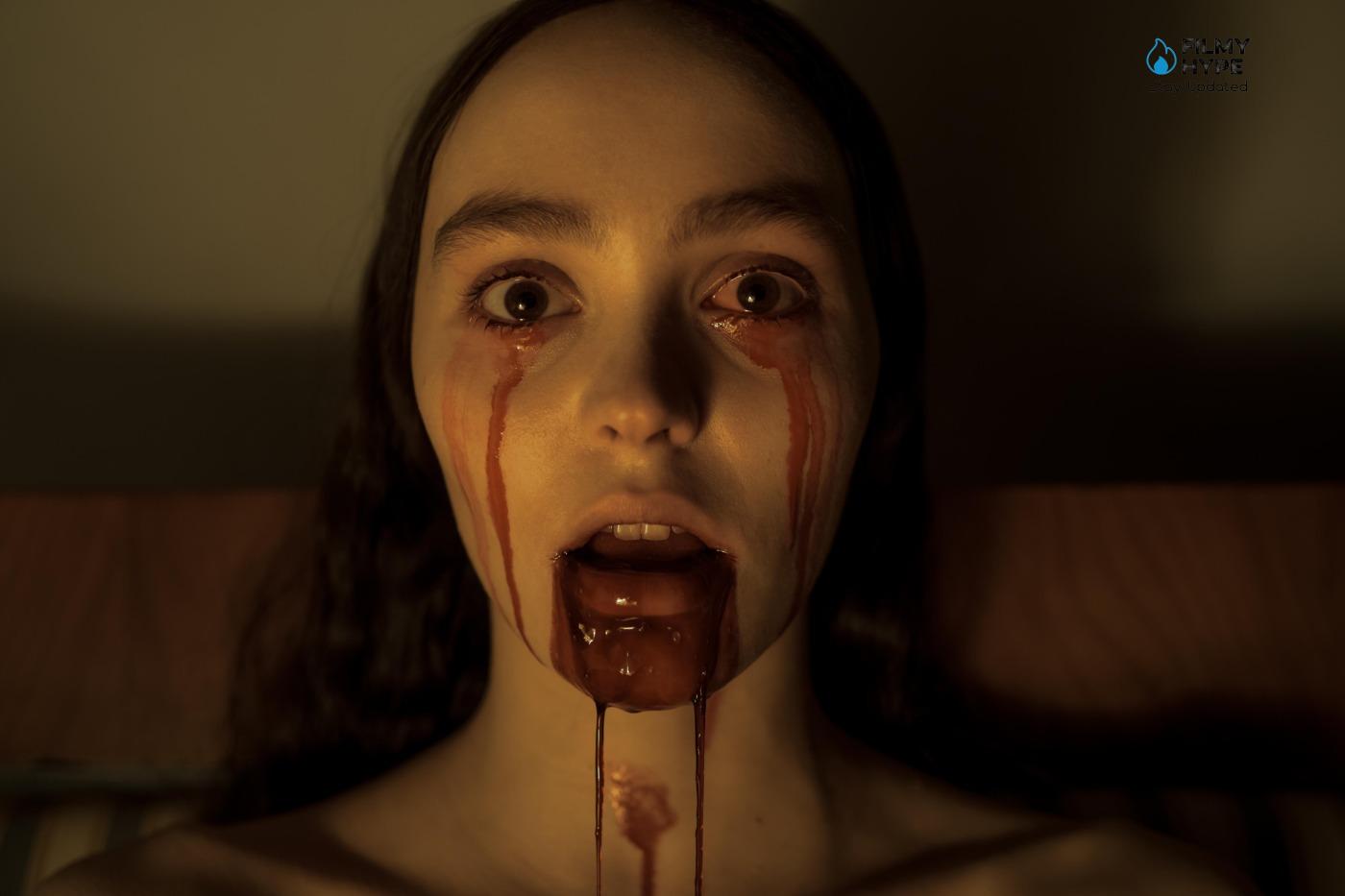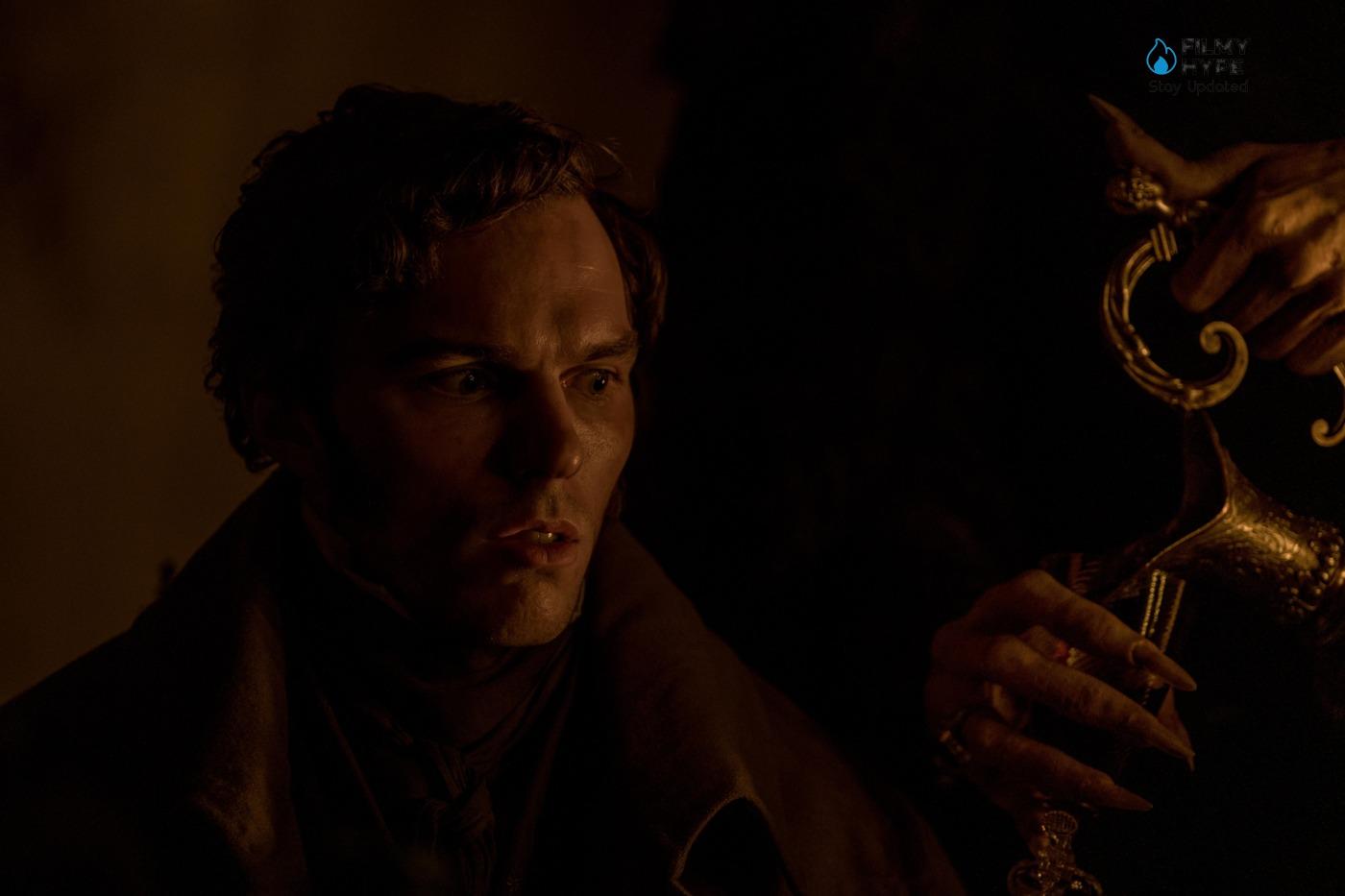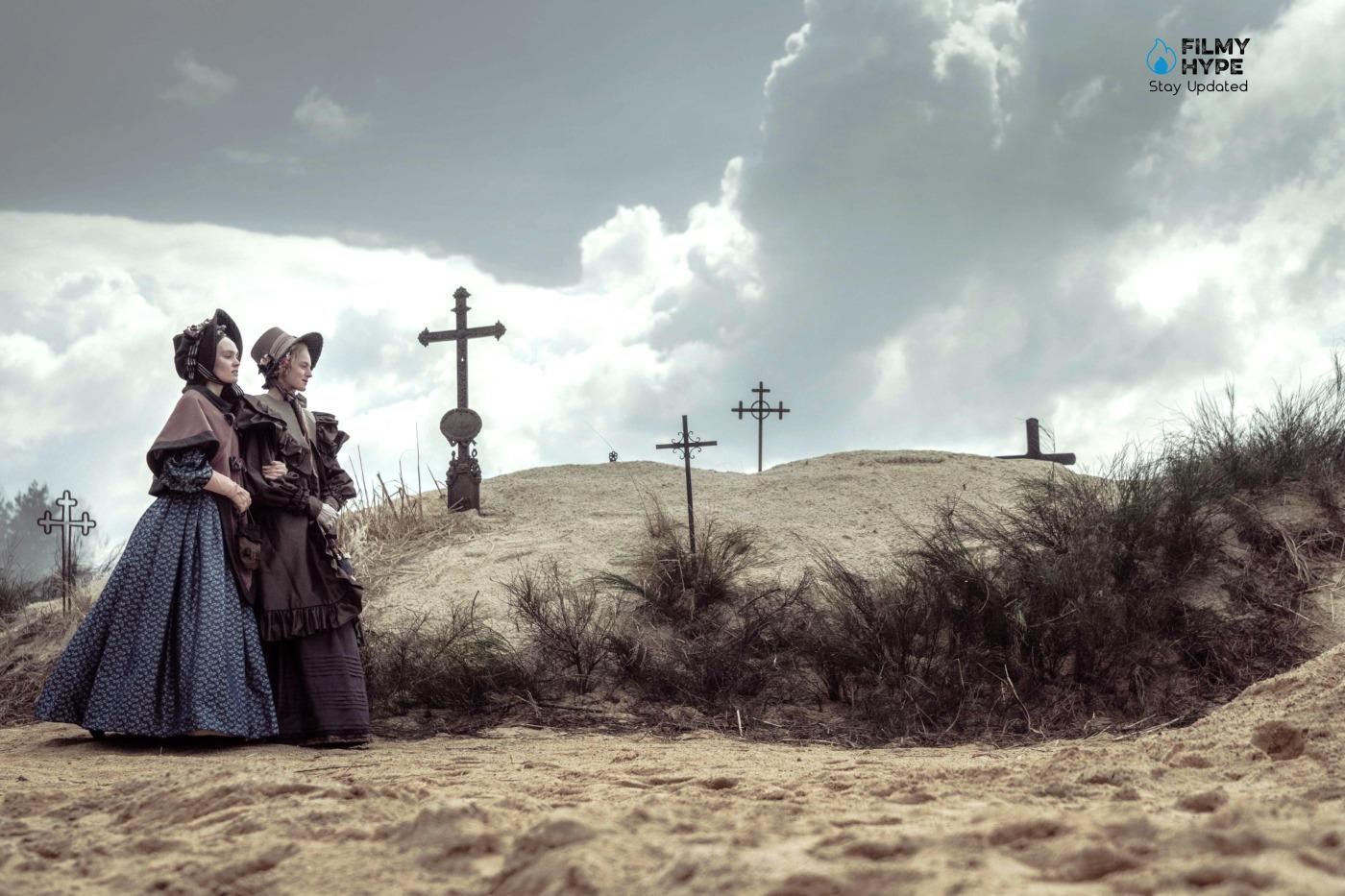Nosferatu 2024 VS 1922: The Biggest Differences Between the New Nosferatu and the Original from 1922?
Nosferatu 2024 VS 1922: The figure of Nosferatu has become a milestone in horror cinema, capable of spanning a century while keeping its aura of terror and mystery intact. From the expressionist masterpiece of F.W. Murnau from 1922 to Robert Eggers’ recent adaptation in 2024, this immortal story has undergone significant transformations while respecting its original essence. With his visceral style and attention to historical details (which we talked about in detail in our review of the film), Eggers has created a version that is not only a tribute to the classic but a powerful and disturbing rewrite. In this comparison, we will explore the main differences between the two versions, analyzing how aesthetics, characters, and symbolism have been reinterpreted for the modern public.

Nosferatu 2024 VS 1922: The Biggest Differences Between the New Nosferatu and the Original from 1922?
For over a century, Dracula has dominated the collective imagination like the vampire par excellence. His figure has been handed down countless times on the big screen, undergoing transformations and reinterpretations that have kept alive the dark charm of this immortal character. On the other hand, Nosferatu—the silent film of 1922 by Friedrich W. Murnau — marked the history of horror cinema with its disturbing Gothic aura, even without being able to use the name “Dracula” for copyright issues. It is not uncommon, therefore, that horror film fans ask themselves: “How does the Count Orlok of Murnau from Count Dracula by Bram Stoker?” And above all, how have these two vampirism icons evolved over the years, up to the most recent productions such as the Nosferatu by Robert Eggers, arriving in 2024? To answer these questions, it is necessary to retrace the salient moments of the cinematographic journey of these characters, analyzing the films and the peculiarities that distinguish them.
The Aesthetics of Count Orlok!
One of the most evident aspects that differentiate Robert Eggers’ Nosferatu from the 1922 classic directed by F.W. Murnau is the appearance of Orlok. In the original film, the vampire is depicted with an appearance similar to a rat, with pointed features and a disturbing but almost theatrical air. In contrast, Bill Skarsgård in the 2024 remake embodies an Orlok more macabre and realistic, with the appearance of a decaying corpse. Eggers wanted to give his Nosferatu a more human touch, with worn clothes, a bald head, and an appearance that recalls a Transylvanian nobleman who has long been dead (with period clothes and mustaches typical of the time when the vampire could be lived). This restyling not only modernizes the character but also intensifies the sense of repulsion and charm that Orlok exercises over the other protagonists of the story.
New Characters: Professor Albin Eberhart Von Franz
One of the most significant additions to Eggers’ remake is the character of Professor Albin Eberhart Von Franz, interpreted by a fantastic as-always Willem Dafoe. This figure, absent from the original film, acts both as an occult expert and as narrative support for Ellen and Thomas. Von Franz not only provides explanations of paranormal phenomena but also adds moments of humor thanks to its eccentricity. Its presence represents a bridge between the rational world of science and the irrational darkness of the vampire, thus making the plot even more multifaceted.
The Relationship Between Ellen and Orlok
In the classic of 1922, Orlok’s interest in Ellen was born after seeing a portrait of him during Thomas’s visit to the castle. In the remake, however, Eggers introduces a deeper and darker bond: Ellen would call Orlok back through her supernatural abilities when she was still young. This element makes the relationship between the two characters more intimate and tragic, transforming Ellen into a more active figure in the narration: a dynamic that adds psychological tension to each of their encounters.
Orlok Feeds
In the original film, Orlok feeds on his victims by biting his neck, following the tradition of vampires. In the remake, however, Eggers chose a more brutal and symbolic approach, with Orlok than directly biting the chest of its victims, at heart level. This detail recalls ancient legends about vampires, where the heart represents the fulcrum of the soul and life. This visual and symbolic choice adds an almost ritualistic level of horror to Orlok’s murders.
The Role of Friedrich and Anna Harding
In Murnau’s film, Friedrich and Anna are secondary characters with little narrative space. In the remake, Friedrich (Aaron Taylor-Johnson) and Anna (Emma Corrin) receive instead more attention, with a deeper friendship, respectively, with Thomas and Ellen. This narrative expansion makes their deaths even more dramatic and significant, intensifying the sense of loss and above all of powerlessness that pervades the film.
Ellen’s Medallion
Another symbolic detail introduced by Eggers is Ellen’s medallion, which is donated to Thomas before his departure. In the 1922 film, this role was played by a portrait of Ellen, which would later be seen by the vampire thus giving way to his obsession. The medallion becomes a key object in the narration of Eggers’ film, further strengthening the link between Ellen and Orlok and between Ellen and Thomas. This object also acts as a symbol of protection and love, which however cannot stop the tragedy.
The Comparison Between Thomas and Orlok?
In the original film, Thomas is primarily a frightened victim. In the remake, however, the character played by Nicholas Hoult demonstrates more courage even going so far as to try to kill Orlok with a stake in his heart when he is in his castle. Although it fails, this moment adds tension and intensity to the comparison between the two characters, making Thomas almost a tragic hero.

The Friendship Between Ellen and Anna?
In Eggers’ Nosferatu, Ellen and Anna share a bond of friendship that in the original film has never been deepened. This relationship adds an emotional layer to the story since the consequences of Orlok’s curse are not limited only to the protagonist couple, but they also extend to close friends.
The Entrance to Orlok Castle!
A symbolic detail is Thomas’s arrival at the castle. In the original film, it is Orlok himself who drives the carriage. In the remake, however, the carriage is empty, and moves like magic, almost without making noise. This small detail reinforces Orlok’s supernatural and disturbing aura, suggesting a dark power that goes beyond human understanding.
Knock: A More Complex Antagonist?
Knock’s character, faithful servant of Orlok, is deepened in Eggers’ remake. In the original film, Knock is a marginal character, while in 2024 it becomes a key figure with one backstory more and moments of interaction with Orlok that increase narrative tension.
Dracula, the Literary Character of Bram Stoker
Before going into the differences between the various transpositions, it is worth remembering the context in which Dracula is literary. Published in 1897, Bram Stoker’s novel lays the foundations of the modern vampire: a fallen nobleman from Transylvania, with supernatural powers, weaknesses (including garlic and sunlight), and a strong dark charisma that makes him at the same time threatening and bewitching. Stoker’s text, written in the form of letters and diaries, explores the struggle between science and the occult, the repression of desires, and the attraction of the unknown, laying the foundations for all subsequent cinematographic reinterpretations of the Count.

From Bram Stoker’s novel to the first Nosferatu
The journey between these two icons inevitably begins with Bram Stoker and the publication of “Dracula”. In the novel, the Count fascinates and terrifies in equal measure, being able to be eliminated with various methods (ash stakes, sunlight, beheadings) and contrasted by characters who have become legendary such as Van Helsing. However, when Friedrich W. Murnau decided to draw an adaptation, he clashed with copyright: unable to use the original names, his protagonist became Count Orlok, while maintaining many of the typical characteristics of the Stokerian vampire.
With Nosferatu (1922), Murnau redesigned the vampire figure in a more bestial and distressing key, giving shape to one of the first examples of expressionist horror cinema. The film introduced the spectral atmospheres of Central Europe, generating a work that, although clandestine (since Stoker’s heirs obtained the destruction of copies), managed to survive and become a cornerstone of silent cinema.
The Characteristics of Nosferatu: Between Alterations of Names and Deadly Rules?
In an attempt to avoid denunciation by Stoker’s heirs, Murnau changed several elements:
- Count Dracula turns into Count Orlok,
- Jonathan Harker becomes Thomas Hutter,
- Mina is Lucy take other names (Ellen, etc.),
- Dr. Van Helsing disappears in favor of a new character.
In addition, the method to destroy Nosferatu diverges from the Stokerian tradition: the only way to kill Orlok is for a woman in love to sacrifice herself, letting herself be dried up by the vampire until the sun arrives. This gimmick not only creates an unprecedented tragic tension but underlines how each adaptation ends up rewriting the canons of the myth for legal reasons or to enrich the dramatic aspect.
The Legacy of Nosferatu: from Bela Lugosi to Herzog
After the Murnau phenomenon, the figure of Dracula returned “official” thanks to Bela Lugosi, who in 1931 became the iconic vampire with a Transylvanian cloak and accent, helping to fix the Count’s image as a charismatic aristocrat. This adaptation marked the beginning of a long series of films Universal, consolidating the difference between the horrendous ‘rattled’ monster of Nosferatu and the seductive and refined Count. In the following years, Hammer produced several versions of Dracula with Christopher Lee, while in 1979 there was a return to the name “Nosferatu” thanks to Werner Herzog. His film “Nosferatu, the Prince of the Night” honored Murnau by taking up the figure of Orlok (played by Klaus Kinski) but inserted more dreamlike elements and emphasized the sadness and isolation of the vampire.

Francis Ford Coppola’s Dracula (1992) and the Romantic Turning Point!
Another fundamental junction is Dracula (1992) by Francis Ford Coppola, starring Gary Oldman, Winona Ryder, Anthony Hopkins is Keanu Reeves. Here, the director returned to the roots of Stoker’s novel, while enriching it with a strong romantic and sensual component, revealing the origins of the Count’s curse and the passion that binds him to Mina (Winona Ryder). This vision mixed Gothic aesthetics, baroque taste, and dark eroticism, distancing itself from the pure feminity of Nosferatu to approach a tragic and tormented vampire, at the same time monstrous and extremely human.
Robert Eggers’ New Nosferatu (2024)
Attention is now turned to other Nosferatu by Robert Eggers, expected for 2024. After “The Witch” and “The Lighthouse”, Eggers has shown a passion for dark and historically coherent atmospheres, suggesting a return to the darkest and most gothic roots of the vampire, perhaps closer to Murnau than to Bram Stoker. Although the details are still scarce, there is considerable expectation among fans, since Eggers promises to follow the original Central European setting, while introducing personal reinterpretation elements.
Comparison Between Nosferatu and Dracula in Cinema: The Multifaceted Vampire
The evolution of the vampire on the big screen shows us how the same figure can be declined in radically different ways:
From the animal monster to the aristocratic count
- Murnau (1922) and Herzog (1979): Nosferatu/Orlok is a pale being, with fangs and claw fingers, linked to pestilence and death.
- Bela Lugosi (1931) and Coppola (1992): Dracula instead presents himself as a magnetic aristocrat, often endowed with romantic or even tragic traits.
Archetype, Eroticism and Vampire Politics
The vampire also symbolizes other concepts: the fear of the stranger, the temptation of forbidden desire, the challenge to nature, and death. In some versions, it becomes a pure “monster”, in others a tormented being, and sometimes a real fascinating antihero.

